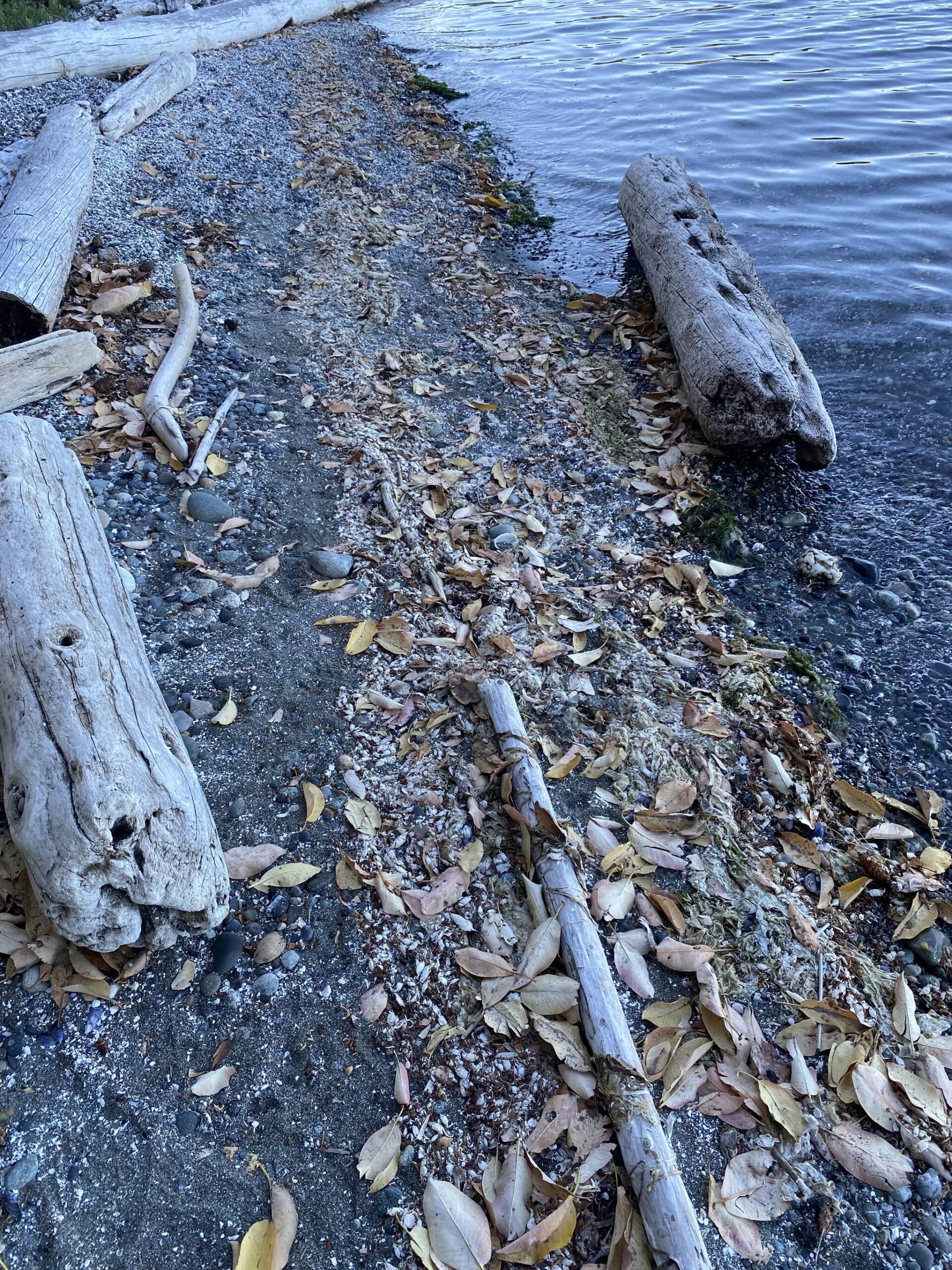Those meandering along Penn Cove and other Whidbey beaches may be startled by what at first appears like a massacre — thousands of baby dead crabs, mixed with ocean debris along the wrack line, where the tide pushes its material.
According to Ralph Downes, an officer with the Department of Fish and Wildlife, this is not cause for alarm. There hasn’t been a documented crab die-off, in fact, quite the opposite, and this is not a graveyard for infant crabs, but a museum of molts.
Crabs shed their exoskeleton by literally crawling out of it over multiple grueling weeks. Underneath is a vulnerable soft shell. Crabs will then “hump up in the mud,” Downes said, slowly growing a new hardshell over the course of more weeks. Meanwhile, that old shell — which appears like a whole crab — washes up on the beach.
Don Velasquez, crustacean biologist with state Fish and Wildlife, receives a lot of reports of dead crabs on the shore this time of year, he said. While crabs molt throughout the year, he suspects this is because there is plenty of food available now for crabs to molt in higher numbers and proceed to the next growth stage.
Young crabs molt as often as six times a year until they become more mature. Between ages two and three, their molts slow to about once a year.
This week also had more extreme daytime tide swings, which likely concentrates molt shells in some areas, Velasquez said. This time of year, of course, is when more people are also on the beach to report the phenomenon.
Crabs of the same type and similar size will often molt about the same time, he said. Some clues that what people are finding are shells and not a mass mortality event include the smell. Corpses wreak much worse than skeletons do. Another clue is bird behavior, he said. If birds are not scavenging, there is likely no meat in the shells.
High temperatures and low tides do contribute to crab mortality, Velasquez said, but this is typically a very small percentage of the molts observed.




